


SARENE LOH
Art Teacher
Ngee Ann Secondary School
Mrs Sarene Sim is currently teaching in Ngee Ann Secondary School and is the Lower Secondary Art Coordinator overseeing the planning and designing of the Art Curriculum since 2011. She is also involved in the school’s Enhanced Art Programme (EAP), which uses a multipronged ICT approach to teach the Visual Arts. In 2012, Mrs Sim presented a paper,’ The National Education Inspired Self-Portraiture Exercise’ at Liverpool, UK during the Seventh International Conference on the Arts In Society. She was also awarded the MOE Ideas Bank best suggestion of the month for the month of July (Cluster) for her contribution, ‘National Education: Goggle Art Project Self-Portraiture Exercise’. Together with her students, she has been actively involved in the Singapore Arts Festival, 2012 and Singapore Youth Festival 2013- 2014 by facilitating projects and workshops. Her vision is to inculcate students’ the necessary 21st century literacy skills so as to to equip them to be responsible, ethical and confident global citizens.
Date: 27 Feb 2015
Venue: National Design Centre
Time: 3 pm - 5.30 pm
I’ve fond memories of National Design Centre. Why? NDC has occupied the former Nanyang Academy of Fine Arts and as a former student of NAFA, I can still remember my enthusiasm, eagerness and wonderment of creating Art to enrich lives. The National Design Centre has still maintained the vision of how Design is transformative and can improve lives. So what is good Design and how do we go about achieving this objective? How do Artists help to support Good Design?
In my view, I feel that National Design Centre serves as a meeting point for artists and designers to collaborate together. I am particularly excited about the programmes that NDC offer to students and working adults. There is openness and a sharing culture, which encourages us to look deeper, in this way; it allows us to reflect on how we can infuse Good Designs in our surroundings. One such programme is the Prototyping Lab by OneMaker Group that aims to provide participants a platform to create innovative pieces of work!
I shared my findings with the team of Art teachers at my school and we are interested in finding out more about the OneMaker Group. Art making with a Good design in mind is definitely an exciting and enriching adventure!
Cheers,
Sarene

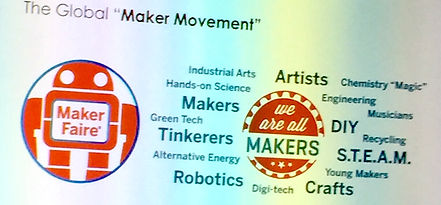
Date: 23 March 2015
Venue: Young Audience Charter School at Kate Middleton
Time: 8 am - 11.30 am
Collaboration is defined as working with others to do a task and to achieve shared goals. Young Audiences Charter School offers its students an arts-integrated curriculum that incorporates content and skills from the arts with other core subjects such as Mathematics, Social Studies and Science.
At Young Audiences Charter School, there are also ongoing professional development that has been valuable in enabling the classroom teachers and Artist-teachers to align their arts-integrated curriculum with questioning and investigating-centered routines such as, ‘I see, I think, I wonder’. In this lesson, the teacher is facilitating idea generation, reflection, critical thinking and creativity by creating opportunities or them to make careful observations and thoughtful interpretations about the imagery. Through this form of inquiry-based thinking, there is a visible natural connection between the arts curriculum and the Mathematics curriculum when students followed the three-step process, interpreting their close observations and challenging their own assumptions and beliefs.
How do you develop Arts integration in the arts curriculum? At Young Audience Charter School at Kate Middleton, teachers are encouraged to collaborate among teachers, practitioners, artists and community so as to identify the outcomes met through an arts integrated lesson or unit. The objective of the arts integrated lessons in each project have been projected through gallery sheets and the project depicts the multiple modes for students to demonstrate their learning and competencies in both the arts and the other core subjects.
As a classroom teacher, I feel that collaboration is fundamental and planning time should be allocated for the stakeholders to discuss and have a common understanding of its arts integrated programs. Schools need to enhance teachers’ development professionally, so as to deepen teachers’ understanding of pedagogies and develop questioning and investigating-centered routines.
The classroom teachers, Artist-teachers, specialists and community are key stakeholders in shaping the arts-integrated lessons. As classroom teachers, we should aim to provide a seamless blending of what is best for the students in terms of integrating units of instruction with the arts curriculum and the curriculum in other subject areas. Based on research, the arts integration programs will enhance the school culture and students’ will be able to think independently and critically.
Cheers,
Sarene








Date: 24 March 2015
Venue: Isidore Newman School (Primary)
Time: 10 am - 11.30 am
Idea generation is transformative and is central to the process of making art. At Isidore Newman School (Primary), exploration of ideas is the basis in developing critical thinking and creativity in order for students to be imaginative and creative learners. The lessons structure in the classroom and students’ sketchbooks provided me an opportunity to review and reflect how generation of ideas can be developed in different ways:
-
Students learn to come up with their own ideas for art through words, images, work of other artist etc.
-
Students experiment with their art pieces using various media and mediums.
-
Imaginative drawing in terms of dreams, emotions and fantasy.
-
Thematic approach with our surroundings such as Nature, Landscape, Cityscape, Architecture, Still life, Portrait etc.
-
Abstraction with colour, lines, shapes, elements of art etc.
-
Narrative, telling a story
According to the school’s Arts Department Mission statement, Newman students make connections with art and life. As a result, the activities at Isidore Newman School (Primary) is planned around building skills and instills students a sense of self-confidence and the ability to explore ideas by visualizing the creative and art-making process.
Cheers,
Sarene
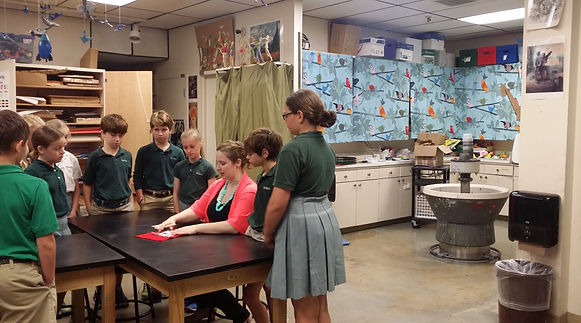


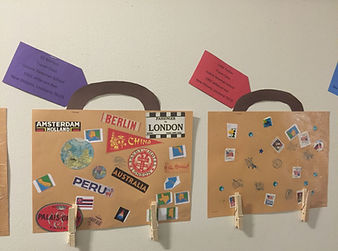


Date: 25 March 2015
Venue: New Orleans Museum of Art Contemporary Arts Center, Ogden
Museum of Southern Art
Pre-Conference: “Museum Educators- Leading Together”.
Time: 9.30 am – 11 am
Leading Audiences Breakout Session: Research & Evaluation
Time: 12 pm – 1.15 pm
Panel Discussion: Leading at All Levels- Museum Educators as Museum Directors
The Breakout Session focused on processes and strategies to help implement programs with the intention to impact Museum learning.
How can Research and Evaluation help to achieve these outcomes? In the group discussion, participants who were interested in brainstorming this current issue addressed these challenges at their institutions. Collectively, the participants came to a consensus that the process of evaluating research in Museum Programmes enables the stakeholders to understand its value and impact on Art education. Likewise, I agree that data collection is needed to show relevancy that Museum Programmes in some instances do improve verbal skills, foster creativity and critical thinking skills in children, enhancing the community spirit and impact lives.
The quality of experience during the Museum visit are measured and monitored by collecting and analyzing its data which are carried out through surveys, control groups, open-ended interviews, interviews with docents and visitors. Often or not, a child may be overwhelmed and daunted when they step into a Museum. Children do not necessary understand the works of art hanging in the gallery spaces and docents may not be fully equipped to connect with them.
As Art educators, how do we measure signs of success (Reasoning, describing works of art etc.) in Museum Programmes? As a classroom teacher, I feel that a Museum educator needs to be a good communicator and have good interpersonal relations with visitors. As Art educators, we take on many roles and I am proposing that we partner Museum educators by collecting and analyzing its data that will help to rethink and retool the rules of Museum programmes. What motivates them to visit the Museum? It is a skill to communicate and provide children the ability to reflect and be genuinely interested in the artworks and this can only be understood when we clearly analyze data pertaining to Museum programmes and identify what we want to achieve.
Cheers,
Sarene





Date: 25 March 2015
Venue: New Orleans Center for Creative Arts (NOCCA)
Time: 2.30 pm – 4 pm
New Orleans Center for Creative Arts provides a lively and visually inspiring arts learning environment. The students are engaged in learning and motivated to succeed, as teachers believe in the ability of the students to grow and provide them with opportunities by supporting them professionally. NOCCA has programmes such as the directive study time that allows teachers collaborate together in order to facilitate study groups in order to improve students’ academic studies. Passion is what drives students to excel at NOCCA, the center creates a safe haven for them to cultivate and hone their skills within a diverse culture. Their vision for every child affirms my belief that as educators, we need to provide a safe and non-threatening environment for students to realize their aspirations.
My learning points are:
-
The importance of Artists as teachers and vice versa
-
Mentoring of students and how we facilitate that process of thinking deeply and creativity
-
Instilling a sense of commitment in students, refueling their passion for the arts through interest-driven projects
-
Having high instructional expectations for students and managing their expectations.
-
Provide a broad space for students to experiment and learn.
-
As an organization, practice a shared value system, communicating beliefs and refining individual perspectives regarding school’s vision and mission. (Why do we do what we do)
Cheers,
Sarene


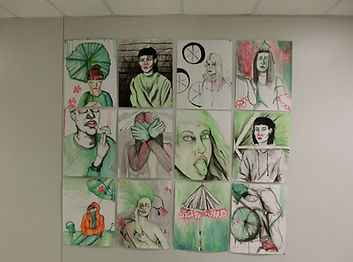
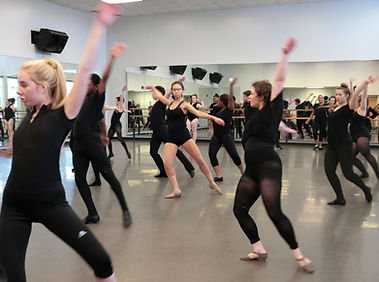
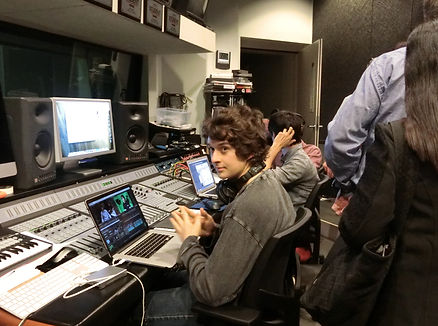



Date: 26 March 2015 (Day 1 of NAEA Conference)
Venue: Convention Center/The Great Hall/ First Level
Time: 9:00 - 9:50 AM
Presenter(s): Tim Gunn
Everyone knows Tim Gunn from his Emmy-Award winning work on television shows such as ‘Project Runway’, ‘Under the Gunn’ and ‘Tim Gunn’s Guide to Style.’ But not everyone is aware of Tim’s long experience as a teacher and his deep passion for education. Caroline Payson, Director of Education at Cooper Hewitt, Smithsonian Design Museum, will talk to Tim about his career as an educator, teachers who have inspired him and his commitment to encouraging the next generation of artists and designers.
Tim Gunn is the Fashion Guru and television personality that we all appreciate him to be and although his work is currently in Fashion Design and mentoring of contestants and designers, I could relate his experiences to my Art teaching.
In his own words, Gunn mentioned:
‘TEACH’
T- Truth Telling
E- Emphasis
A- Asking
C- Cheerleading
H- Hope for the Best
Why do we ask? Who do we ask and how do we facilitate asking? Towards the end of Tim Gunn’s presentation, he was animatedly expressing how he transitioned from Fine Arts Background (As a Sculptor) into a Fashion Designer. He recalled that during this process of navigating and making sense of the differences between Teaching the Arts compared to Teaching Designers, he realized that the nature of problem solving for each disposition is largely different. As an art educator in a secondary school, I subscribe to the idea that we need to facilitate discussions that forces students to be creative about problem solving. We need our students to be curious and question the product in mind or its process. What can we identify? How can we improve? What do we do we do with it? How can we bring forward and elevate their understanding of the topic? Why do we do that? In this manner, students are challenged to think in a non-linear way and learn to inquire deeply, refining their thoughts and be independent learners. Likewise, as an art educator, I need to constantly question my own beliefs, clarifying and refining my own understanding about teaching.
Cheers,
Sarene

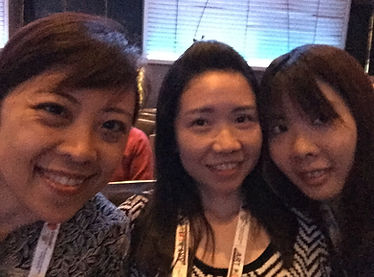

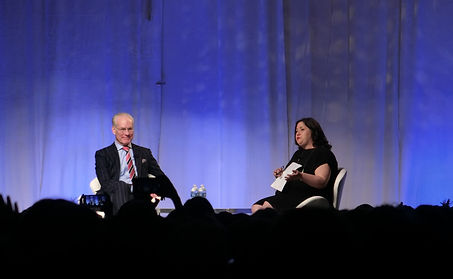
Date: 26 March 2015
Venue: Hilton Hotel/ Chart B/ Riverside Building
Time: 11.00 – 11.50 AM (Day 1 of NAEA Conference)
Presenter(s): Raymond Veon, Jeff Mather
Full STEAM Ahead? Over the Cliff or Into the Sky?
How effective is STEAM education? What are STEAM Best Practices? Find out in this interactive session from a university researcher and a veteran teaching artist working in cutting-edge STEAM schools.
At the beginning of the session, the presenters formed us into smaller groups and asked us to rank STEAM lessons according to how high quality or low quality the lessons were. This icebreaker activity gave me an insight about how art educators generally look at Arts integration with Science, Mathematics, Science. Most of the feedbacks were that there should be a consistent and equal weightage of the subjects when its content are being integrated with the Arts. The presenters gave an overview that the core values of STEAM programme are for students to develop innovative thinking and take ownership of their learning. This was imperative as there has been a proven 20 years decline in students’ thinking out of the box and we need students to collaborate and learn how to navigate complex relationships so as to prevent economic recession. More professionals were headhunted for positions in the creative industry as compared to more traditional occupations. The exciting bit of the presentation was STEAM projects that incorporated the concept of a ‘Handling Collection’. What is it?
‘Handling Collection’ engages learners and stimulates curiosity. The activities entice students to be cognitively primed for possibilities that they imagine the world to be. The activities should not direct learners to obvious solutions as its aim is for them to co-construct their knowledge independently or collaboratively. One such example was the topic of Avian Architecture where students were asked to explore the possibilities of a combined energy station, which has the functions of a human nest that has comparable properties of a Bird Nest. I still have much to learn and am inspired by STEAM Projects and how implementing a ‘Handling Collection’ will be able to stretch students’ creative thoughts. This is an exciting ideology and I am keen to share with my fellow colleagues!
Cheers,
Sarene



Date: 26 March 2015 (Day 1 of NAEA Conference)
Venue: Convention Center/Meeting Room 221/Second Level
Time: 12.00 – 12.50 AM
Presenter(s): Olivia Gude
Not Standardization: Curriculum and Core Values in Next Generation Standards
Interpretations of the new standards shape the discursive spaces within which art educators will create a renewed culture of curriculum for art, design, and media education.
Olivia Gude’s presentation and slides stimulates my thinking in terms of how I can use interpretations of the new standards to challenge and enhance my own learning and teaching of the Arts. Some of the recommended Artists that could represent the new standards are of Laurie Simmons, Katherine Grosse, Mark Dion and Danh Vo.
I would also like to highlight some of my takeaways from the session and what Gude has asked art educators to think further of
-
Building a culture of constructive language, to use art as an approach to communicate by looking at each other’s work.
-
Remind students the much bigger world we live in and how we can create meaning through the Arts.
-
Significance of meaningful pre-assessment tools and provided those needed experiences especially if students do not have the necessary skills or knowledge.
-
How do we establish criteria? (Contemporary criteria/ Collaborative criteria)
-
Big ideas include examples, ‘What is Cuteness?’ ‘What is Beautiful?’ etc.
-
How do we plan curriculum around big ideas?
-
What are the different ways of approaching the making of Art? Do we do it without a pre-conceived plan?
Cheers,
Sarene


Date: 26 March 2015 (Day 1 of NAEA Conference)
Venue: Convention Center/Meeting Room 219/Second Level
Time: 4.00 – 4.50 AM
Presenter(s): Delane Ingalls Vanada
Inquiry-Driven Learning: Design Thinking Processes in Visual Art
Interpretations of the new standards shape the discursive spaces within which art educators will create a renewed culture of curriculum for art, design, and media education.
Explore learner-centered, design thinking strategies that link connection-making, inquiry-based learning and self-direction. Teachers, as designers, can unleash a balance of creative, critical, and practical skills and mindsets for success.
The presenter, Delane Ingalls Vanada presented a structured overview on the Design Thinking Processes in Visual Art and how it its pedagogy aligns with and inquiry-based environment.
How do we motivate students to be self-directed and make sense of things?
1) Dispositions/ Mindsets
Students need to have the willingness to grow and learn how to take risks whether them having the Fixed mindset of Growth mindset.
2) Teaching in an inquiry-based environment
Students are affected by our teaching and the environment is often teacher centered. We need to provide students a learner-centered environment so that students are empowered and invited to make connections to the world independently. We still need to set expectations of students to have mastery and purpose in their work. This learner-centered pedagogy aligns with Design thinking.
3) Design thinking is a combination of students’ mindsets and its creative processes
Students need to focus more on the possibilities of the process rather than the end product. This fosters a non-linear thinking which is tied with innovation, insight etc. The collaborative process is a method for students to co-construct knowledge and this is a constructivist way of thinking.
The Q & A provided some insight into how we can implement Design Thinking Processes in Visual Art and also striking a balance of students’ commitment and discipline in honing their technical skills.
-
Make thinking visible. Documenting the process through photos and observations/studies. Gallery of stories (Narrative).
-
Quality thinking. As a facilitator and content specialist, design a curriculum that elevates the Design thinking Processes in Visual Art. A classroom teacher might focus on the process, product or ensures that there is also an equal emphasis on skills. For example, the teacher might design a problem for students to solve after ensuring students have the necessary skills.
Cheers,
Sarene

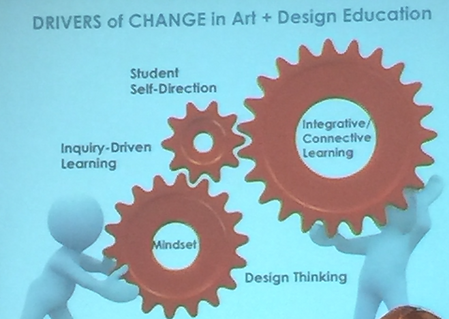
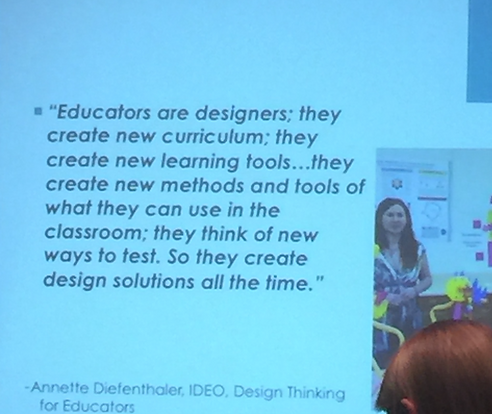
Date: 27 March 2015 (Day 2 of NAEA Conference)
Venue: Convention Center/Meeting Room 223/ Second Level
Time: 9:00 - 9:50 AM
Presenter(s): David Miller and John Howell White
Painting: Designing a 21st-Century Framework
John White, David Miller Explore the opportunity that painting holds for 21st-century adolescent learners. Learn about a conceptual framework designed to embrace contemporary artists and emerging technologies.
We often teach students how to paint whether it being in the lower secondary or upper secondary level. I appreciate how the presenter, John Howell White organized the principles of painting (Basic organizing principles according to Medium: 1) Tempera and Gouache, 2) Dry Media, 3) Watercolour inks, 4) Acrylic, 5) Oils 7 ) Encaustics, 8) Walls, 9) Other ways of painting etc.)
in an easy to understand manner which students will be able to learn and apply. It provides a glimpse into how painting is used in a variety of ways and how it shapes the 21st century framework through its imagery.
The presenter asserted that the imagery of painting depends on the context and language used. Through the medium, teachers will be able to prompt ‘conversations’ that will facilitate students in thinking how the imagery or properties of painting provides an adjective for students to understand its ambiguity.
Painting in the 21st-Century Framework is a way of communication, to make order, disorder, engage ideas, participate, telling of stories and being playful. We need to understand its composition, ideas, and construction in order to communicate to the audience. There are a variety of imageries such as text, media, social issues, graphic imagery and iconography. In my opinion, by planning topics that are student centered, students will be able to investigate the topic thoroughly and understand its relevancy to social or cultural issues.
The Artistic strategies (chart) he researched and developed is particularly useful and as art educators, we can use the chart to describe and explain to students how we can critically reflect, refine and improve our painting processes.




Date: 27 March 2015 (Day 2 of NAEA Conference)
Venue: Convention Center/The Great Hall/ First Level
Time: 11.00 - 12:50 PM
Presenter(s): Ann Gerondelis, Catherine Muller, Jake Myers, James Rees, Olivia Gude, Nick Hostert, Steve Ciampaglia, Ron Wigglesworth, Madeleine Stern, Kate Thomas and Rachel Valsing
Curriculum Slam! Assembling Comprehensive Contemporary Art & Design Curriculum
Teachers from across the continent share curriculum in fast, functional, and fun format. Curated by the Museum of Contemporary Art Chicago, each performative presentation introduces fresh activities and artmaking approaches.
A total of 11 presenters across the continent shared curriculum that introduce refreshing and innovative art making and creative projects. The information in the sharing is embedded in the NAEA App and you can access through this link: https://d3oxih60gx1ls6.cloudfront.net/195ad773-31c9-411e-aedf-281b0ffb0605/41a4a6a8-225a-4d80-ae99-cc175e47d045_2015_NAEA_Curriculum_Slam_-_Event_program.pdf
My takeaways for the sharing are:
1) Design activities and lessons that engage students in the art-making process. For example, students are given the opportunity to unpack, disassemble materials or objects so as to see world in new ways and use their skills to build innovation objects are installations. This approach might be attractive to our students who are more tactile-kinesthetic learners, as they need to use their hand on skills to figure and interpret their own understanding of the subject matter/content. Students are allowed to investigate the content by sorting and organizing based on function, form, proportion, colour, size etc. (Presentation: Acting out)
2) Rachel Valsing Presentation, “UN-Rules: Breaking Rules in Art to Make Better Art”. I admired how she reflected on her lessons, “How do I get my students to think?” She challenges students to experience the process rather than the product. The “Un-Rules” are a set of actions inspired by students, and designed by their teacher to shake up the traditional standards of creating art. Students are now allowed to use any of the tranditional methods to create art, this can be very liberating as students are forced to look at the world differently and art in the basic sense, is art-making and expressing your individuality.
Olivia Gude’s presentation on Principles of Possibility: Considerations for a 21st Century Curriculum by Olivia Gude stresses how as Art educators, we need to think differently, a new conception which is not a fixed set of standards. It is how we make meaning in our lives and how these ideas connect to our inner and outer worlds and through investigating and taking for granted concepts (Local/global issues), we can reimaging life and to imagine a world otherwise. To have the sensibilites of the artist, to attempt to change the world. (Social Justice).
Their works and research reminds me of why we make art and what kind of stories do we want our students to tell? What is the purpose of Art in the 21st Century and Singapore context?
3) In all of the presentations, there is a common theme. How can we get students to think about their culture and global/local issures critically? Some of the presenters’ project titles are fascinating as the prompts they have used are, ‘What is beautiful?’, ‘What is Cute?’, ‘Getting Good at being Bad?’, ‘The Lunch Party’ etc. Students are challenged to think and create possibilites, exploring each varied perspective and the teachers faciliates the open dialogue!








Date: 27 March 2015 (Day 2 of NAEA Conference)
Venue: Convention Center/Meeting Room 226/ Second Level
Time: 11.00 - 12:50 PM
Presenter(s): Andrew McCormick
DIY Design: Creating Curriculum to Foster Design Thinking
Ten proven middle school art projects foster design thinking and shift from a curriculum focused on training future artists to a more problem-based program.
The information in the sharing is embedded in the NAEA App and you can access through this link: https://docs.google.com/presentation/d/1tPzjyJbVUzV4EBupReVZUUvTiu9OF3JtWQbOwS9Q9uE/mobilepresent?slide=id.g2f7aa17f1_0_0
Through Andrew McCormick sharing, I realized how using prompts as titles of the projects can create opportunities for students to solve complex problems and design innovative and out of the world solutions through the art-making process. The imageries and outcomes shown in the slides are examples of students solving problems using the Design Thinking processes. The teacher also uses a variety of IT tools to support learning and gather students’ feedback. (Using Twitter to crowd source artistic critique, www.youtube.editor to create movies or using Google hangout live).



Date: 28 March 2015 (Day 3 of NAEA Conference)
Venue: Hilton Hotel/Quarterdeck C/Riverside Building
Time: 8:00 – 8:50 AM
Presenter(s): Stephanie Pickens, Michael Bell, Stephanie Wirt, Debi West
Mining for Ideas: Powerful Use of Prompts
Veteran teachers share the latest concepts on how to mine for new ideas while using prompts in the art classroom as powerful tools for jump-starting creative thinking and visual problem solving.
The idea of using prompts is not entirely unique but in a classroom setting, the consistency of using prompts every other week invites and provokes students to interpret the prompts. The outcomes can be progressively captured and students are engaged through its flexibility in using varied mediums and artistic styles. In my view, Prompts are strategies that we can used to encourage students to take responsibility for their own learning, to question, reflect, persevere and communicate effectively. Prompts facilitate critical thinking skills and emerging 21st Century Competencies. The use of prompts will create a lively and visually inspiring and learning environment.
Why are Prompts Powerful tools? (Summarized from Presenters’ slides)
1) Give students prompts and tech them how to work without them
2) Prompts build creative thinking
3) MINE for ideas- Research
4) Creative thinking builds confidence in artmaking
Results
Enhance cross curricular connections, strengthen college and career ready programmes, builds confidence in students and makes for more individual thinkers.
Prompts (Examples)
Students have 2- 3 prompts per week and use their sketchbooks to interpret the prompts
Using Quotes
-
A head full of fears has no room for?
-
Inside my head is…?
-
When I look through the mirror I see…?
-
Water, water everywhere but not a drop to drink
-
Time and memory
From Specific to Suggestive
-
Me!
-
Ride!
-
Eat!
-
Fingerprints
-
Rubbings of textures
-
An Adventures
-
A Dream
-
Today I feel…
Series
-
31 Nights Project/ 7 Nights Project (Themes include: The beast, The Prisoner, The Progression, Post Secret movement, The Portal etc.)





Date: 28 March 2015 (Day 3 of NAEA Conference)
Venue: Hilton Hotel/Quarterdeck C/Riverside Building
Time: 11:00 – 11:50 AM
Presenter(s): Debra Pylypiw
Best Practices in Online Art Education: The Future is Now
Learn how to make your online art course more student-centered, collaborative, interactive through innovative, effective, research-based practices. Experienced online educators invited to share in the discussion.
IT support was crucial for online art courses to be effectively catering to learner-centered lessons. I felt that the Presenter could perhaps use existing lesson plans or projects to further explain how her online art courses support innovative practices. Nevertheless the presenter, Debra Pylypiw was forthcoming and shared the use of Blackboard Collaborate and Moodle, which is a free software to use. She also mentioned that there were many museums that are currently using online software to engage their audiences.
The use of Blackboard Collaborate could be used for the following purposes:
(Summarized presenter’s slides)
-
Weekly live Sessions
-
Present new material
-
Critique
-
Questions and Answers
-
Discusssions
-
Review
-
Archives (Slides with information)




Cheers,
Sarene


